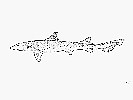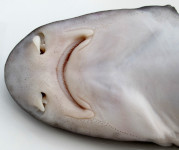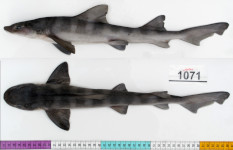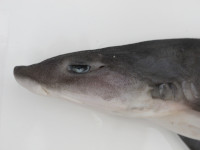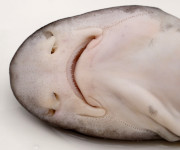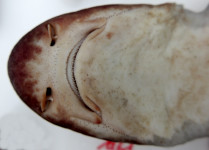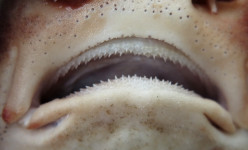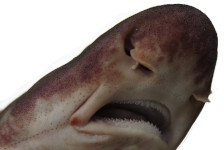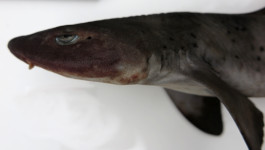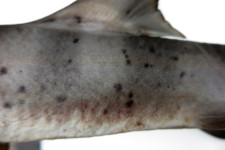Triakis scyllium
Müller & Henle, 1839
Banded houndshark
Classification: Elasmobranchii Carcharhiniformes Triakidae
Reference of the original description
Systematische Beschreibung der Plagiostomen. Berlin, Veit, pp. 1–200
Systematische Beschreibung der Plagiostomen. Berlin, Veit, pp. 1–200
Image of the original description
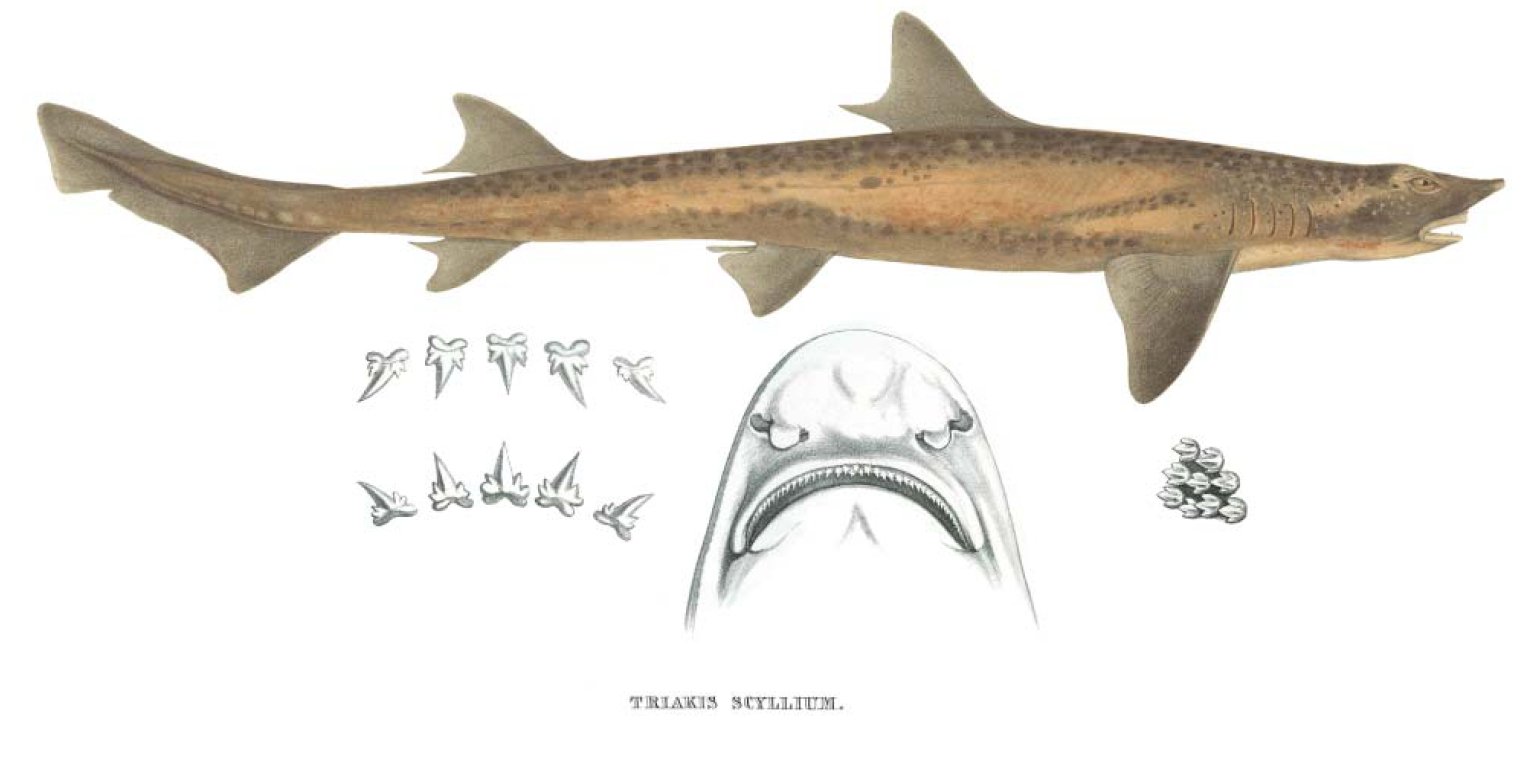
Triakis scyllium Müller & Henle, 1839

Triakis scyllium Müller & Henle, 1839
Synonyms / new combinations and misspellings
Hemigaleus pingi, Triacis scyllium, Triakis scyllia, Triakis (Triakis) scyllium
Hemigaleus pingi, Triacis scyllium, Triakis scyllia, Triakis (Triakis) scyllium
Description :
Citation: Triakis scyllium Müller & Henle, 1839: In: Database of modern sharks, rays and chimaeras, www.shark-references.com, World Wide Web electronic publication, Version 05/2025
Please send your images of "Triakis scyllium" to info@shark-references.com
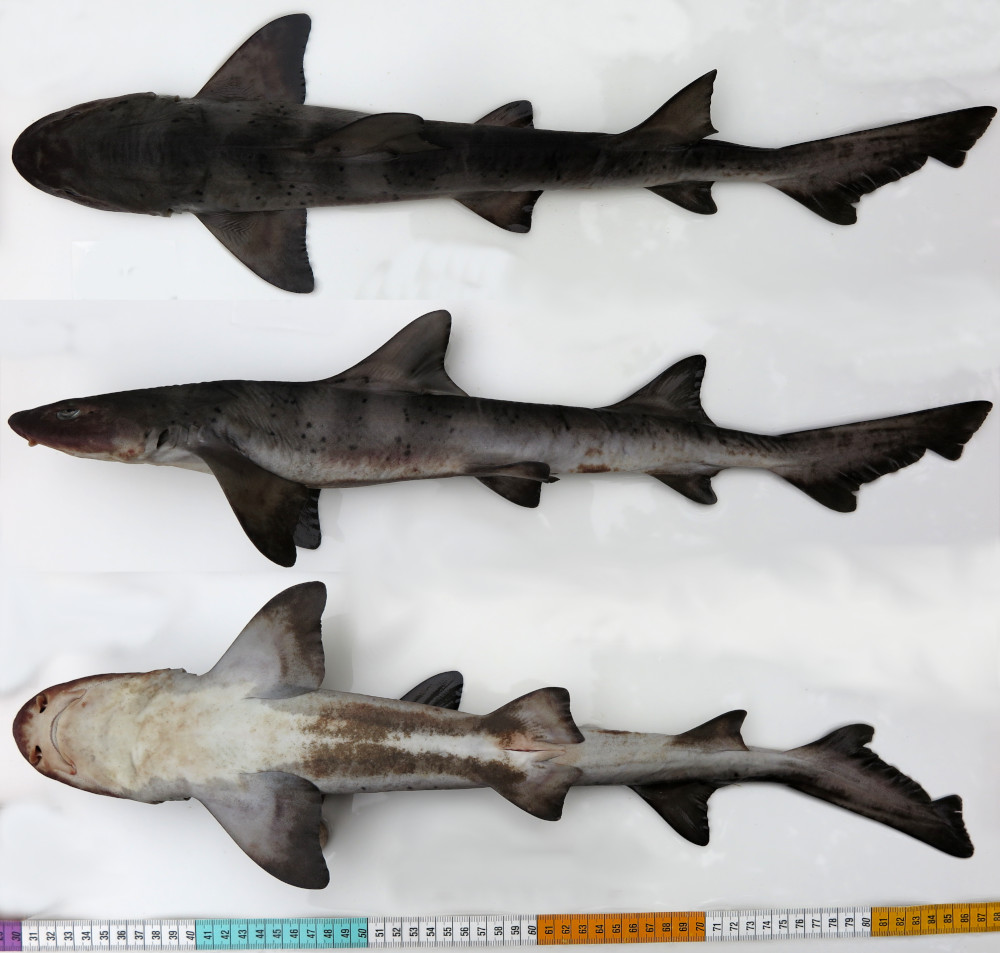
Triakis scyllium Müller & Henle, 1839, ERB 1261, male, 55, 2 cm TL, Japan © Frederik H. Mollen (Elasmobranch Research Belgium)

Triakis scyllium Müller & Henle, 1839, ERB 1261, male, 55, 2 cm TL, Japan © Frederik H. Mollen (Elasmobranch Research Belgium)
Common names
 Tollo rayado,
Tollo rayado,  Virli coro,
Virli coro,  Banded houndshark
Banded houndshark
 Tollo rayado,
Tollo rayado,  Virli coro,
Virli coro,  Banded houndshark
Banded houndshark
Short Description
Original diagnosis after Compagno, 1984 [517]: Field Marks: A moderately slender houndshark with a short broadly rounded snout, lobate anterior nasal flaps that do not reach the mouth and are far separated from each other, long upper labial furrows that reach the lower symphysis of the mouth, teeth partially bladelike, with strong, erect to oblique cusps on all teeth and well-developed cusplets, relatively narrow fins, and scattered black spots.
Diagnostic Features : Teeth with strong cusps and cusplets on almost all teeth, not semimolariform, lateroposterior teeth bladelike, with strongly oblique cusps. Pectoral fins broadly triangular in adults. First dorsal fin with nearly vertical or posteroventrally sloping posterior_ margin. Total vertebral counts 149 to 155. Body with sparsely scattered small black spots and broad dusky saddles in young, spots fading and sometimes absent in adults
Original diagnosis after Compagno, 1984 [517]: Field Marks: A moderately slender houndshark with a short broadly rounded snout, lobate anterior nasal flaps that do not reach the mouth and are far separated from each other, long upper labial furrows that reach the lower symphysis of the mouth, teeth partially bladelike, with strong, erect to oblique cusps on all teeth and well-developed cusplets, relatively narrow fins, and scattered black spots.
Diagnostic Features : Teeth with strong cusps and cusplets on almost all teeth, not semimolariform, lateroposterior teeth bladelike, with strongly oblique cusps. Pectoral fins broadly triangular in adults. First dorsal fin with nearly vertical or posteroventrally sloping posterior_ margin. Total vertebral counts 149 to 155. Body with sparsely scattered small black spots and broad dusky saddles in young, spots fading and sometimes absent in adults
Distribution
Northwest Pacific: southern Siberia to Taiwan [517]. Nominal records from the Philippines [544]. Source: www.gbif.org
Northwest Pacific: southern Siberia to Taiwan [517]. Nominal records from the Philippines [544]. Source: www.gbif.org
Human uses
fisheries: minor commercial; price category: high; price reliability: very questionable: based on ex-vessel price for species in this family
fisheries: minor commercial; price category: high; price reliability: very questionable: based on ex-vessel price for species in this family
Biology
Ovoviviparous, embryos feed solely on yolk [733]. Found on the continental and insular shelves, often occurring in shallow water close inshore. Prefers estuaries and shallow bays, especially sandy and algal-covered areas and eelgrass flats. Feeds on small fishes and probably crustaceans and other benthic invertebrates. Often solitary, though some may cluster in resting areas on bottom [517][17641]
Ovoviviparous, embryos feed solely on yolk [733]. Found on the continental and insular shelves, often occurring in shallow water close inshore. Prefers estuaries and shallow bays, especially sandy and algal-covered areas and eelgrass flats. Feeds on small fishes and probably crustaceans and other benthic invertebrates. Often solitary, though some may cluster in resting areas on bottom [517][17641]
Habitat
demersal; brackish; marine
demersal; brackish; marine
Remarks
shark-references Species-ID=7250;
shark-references Species-ID=7250;
Parasites (arranged by Jürgen Pollerspöck)
Cestoda
Copepoda
Isopoda
Hirudinea
Cestoda
- Acanthobothrium triacis Yamaguti, 1952 [16129] [16175] [16448] [28741]
- Callitetrarhynchus gracilis (Rudolphi, 1819) Pintner, 1931 [16112]
- Clistobothrium tumidum (Linton, 1922) [16443]
- Phyllobothrium serratum Yamaguti, 1952 [16129] [16443] [14629] [34140]
- Scyphophyllidium angustum (Linton, 1889) Ruhnke, 2011 [34140]
- Scyphophyllidium triacis (Yamaguti, 1952) [16129] [16443] [16200] [34140]
Copepoda
Isopoda
- Thaumastognathia bicorniger Ota, Kurashima & Horie, 2022 [30445]
Hirudinea








